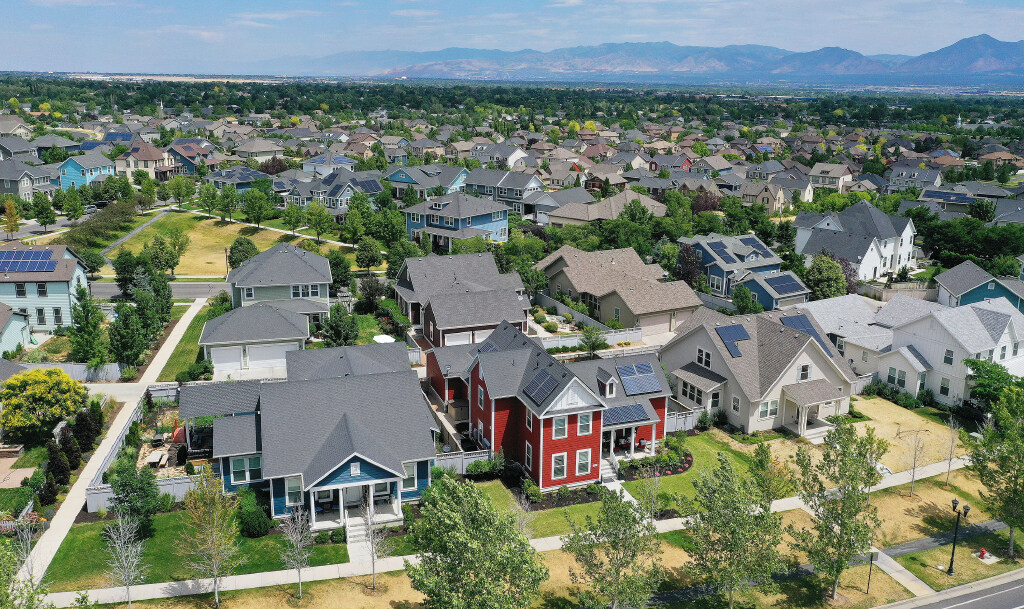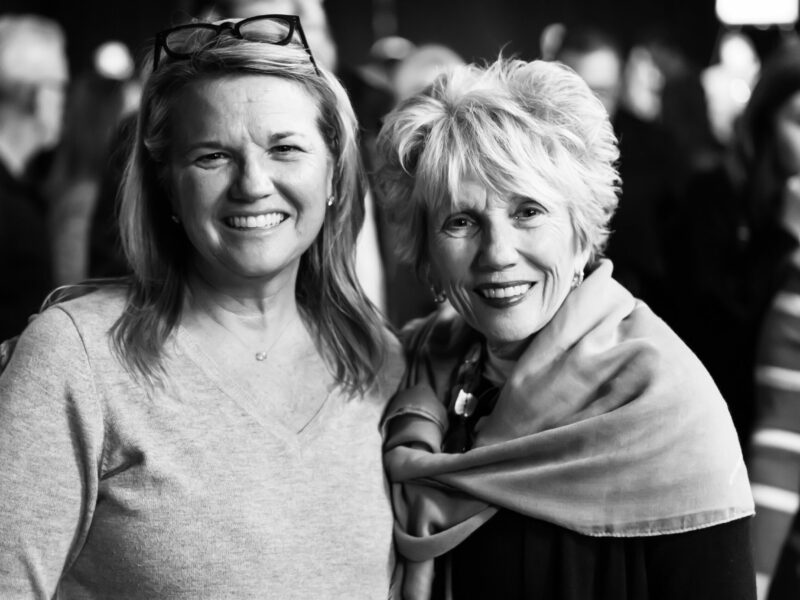
Why are master-planned communities taking Utah by storm?

Surrounded by the snow-topped Oquirrh Mountains, full of ponds, tree-lined hiking paths and bike trails, community parks and pools, Daybreak is a nature-lover’s dream. The over 4000-acre master-planned community in South Jordan, Utah, has restaurants, shopping centers and its own elementary schools. Daybreak resembles a small city in its own right.
With Downton Daybreak on the horizon—the new sports and entertainment district, replete with a ballpark, megaplex, open-air arena and ice skating rink—Daybreak, which first began development in 2004, is continuing to evolve and up the bar for other Utah communities.
Perhaps it’s no wonder master-planned communities like Daybreak are cropping up all over Utah. Also called green towns, planned communities or new cities, master-planned communities (MPCs) offer what many Utahns are searching for in a new home—community.
With organized events, social clubs and communal spaces geared toward strengthening the bonds between neighbors, MPCs provide opportunities for connection that more conventional neighborhoods lack. With that sense of camaraderie comes the promise of security, reinforced by features geared toward safer living, such as gated areas and community-wide security systems.
The eco-friendly living options are also appealing to Utah residents (over half of whom are concerned about environmental issues in the state, such as lack of water and poor air quality). Many MPCs, such as Daybreak, Desert Color and Utah City, profess to be dedicated to sustainability. Pedestrian-friendly and bikable master-planned communities help residents disrupt their reliance on cars and reduce air pollution. By deliberately focusing on meeting residents’ needs locally, MPCs also help minimize resource-guzzling travel. This localized approach is not only more convenient for residents, but it also aims to help reduce their carbon footprints.
Often boasting resort-level amenities such as parks, pools, fitness centers, walking trails, golf courses and recreational spaces, MPCs bring a level of luxury and convenience that is appealing to many buyers.
“Lots of buyers prefer MPCs because they are generally seen as a bit more hands off,” says Cody Steck, a Salt Lake City real estate agent. “They require less landscaping and other land maintenance, look nicer, and create continuity between the houses. This more uniform look in the neighborhood creates a more pleasing place to live.”
“There is also a large portion of buyers who prefer living in newer areas and value new roads, new sidewalks, new stores, which makes MPCs very appealing for them,” Steck explains.
With Utah’s economy booming, its infrastructure stable and its population growing, developers also often prefer MPCs to other forms of residential development, Steck says. They are smart to tap into this hunger for community, safety, sustainability and luxury.
“MPCs are easier and more efficient to build because you are planning out dozens of lots all at one time, on a completely open piece of land,” Steck continues. Because of skyrocketing land prices and increased building costs, MPCs offer efficiency. Developers can increase density and keep housing prices reasonable while still turning a profit.
“MPCs are easier and more efficient to build because you are planning out dozens of lots all at one time, on a completely open piece of land.”
Master-planned communities provide a long-term vision for growth that hodge-podge real estate development lacks. While smaller real estate projects are often derailed due to lack of funding or unforeseen circumstances, MPCs often have decades-long plans for incremental, sustained growth that is beneficial to residents, developers, and nearby towns and cities. MPCs can also be a boon to the state, helping bring in revenue and encourage job growth.
These communities may also be leaders in providing innovative solutions to the problems that Utah wants to tackle. Desert Color, one of the MPCs taking root in St. George, is facing the region’s water shortage issue—and questions about the community’s water usage—head-on. The solution: A recreational water park. The park will tap treated, private well water, too brackish for regular consumption, before funneling it to irrigate the town’s greenways. In thinking outside the box, Desert Color is a community dedicated to desert living and creating a new model for sustainable desert growth.
Utah’s new, developing and established master-planned communities
- Brio, Washington, UT: This 194-acre MPC is the only one in Utah to make “Where to Retire’s” short list of 50 best master-planned communities in the U.S. Developed by Cole West Home, Brio is dedicated to resort-style living, offering pools and outdoor fireplaces in many of its homes, which are fully sold-out.
- Desert Color, St. George, UT: A 3,350-acre MPC built around an ethos of sustainability, diversity and empathy. The community, built by Clyde Companies and backed by Blue Diamond Capital welcomed its first resident in 2019. It is continuing its expansion and will feature residences, shopping, dining, entertainment, commercial, retail, hospitality and recreation.
- Divario, St. George, UT: This 730-acre MPC will include nearly 3,200 residential units to be built over a decade. Developed by LDC, Inc., Divario will offer a variety of living options, from mixed-use apartments to single-family homes.
- Downtown Daybreak, South Jordan, UT: A nearly 200-acre mixed-use development that will serve as a regional hub expands the existing Daybreak master-planned community. Overseen by the Daybreak Communities development company, Downtown Daybreak is projected to be completed in 2025.
- Herriman Towne Center, Herriman, UT: This 370-acre MPC includes a mix of retail, recreation and residential space, all within a walkable community. The core of the community boasts a city hall, county recreation center, county library, elementary school and community park.
- Rosecrest, Herriman, UT: A 2,500-acre MPC overlooking the Salt Lake Valley with over 300 acres of open space. Developed by Momentum Development Group, Rosecrest has been growing since 1999 and includes everything from starter townhomes to luxury homes.
- SkyRim Project, Hurricane, UT: This 38-acre MPC will include 519 total residential units and 76,419 square feet of commercial space. The multifamily and commercial development, backed by NAI Excel and developed by Steward Land Company, will provide needed housing to the area.
- Utah City, Vineyard, UT: This is a 700-acre MPC committed to being sustainable and pedestrian-friendly. Developed by Woodbury Corporation and Flagship Homes, it will have 2 million square feet of restaurants and retail space with 3 million square feet of commercial and hospitality space—all on Utah Lake’s shoreline.
- Wildflower, Saratoga Springs, UT: A 1,200+-acre MPC, designated Utah’s first active family community, Wildflower will boast over 3,000 housing units, along with amenities that encourage fitness and recreation, such as hundreds of acres of trails, parks and open space. Built by Edge Homes, Lennar and Toll Brothers, Wildflower features a variety of housing options, from townhomes to luxury single-family houses.






